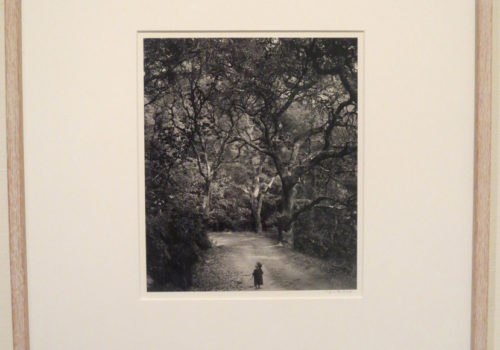The Kiyosato Museum of Photographic Arts (KMoPA), located in Japan’s Yamanashi district, is dedicated to promoting photographers whose work reflects an affirmation of life. Until December 23rd, museum director Eikoh Hosoe and chief curator Yuko Yamaji present three artists for whom the forest is central to their creation : Wynn Bullock, Takeshi Shikama and Manabu Miyazaki.
With the theme and in his use of black and white, Wynn Bullock is close to Edward Weston, who, with Man Ray, was one of his first sources of inspiration. From the “West coast school”, Bullock is a technician of light and master printer. “Let There Be Light”, which was revealed by Edward Steichen in the “Family of Man” exhibition in 1955, sums up his approach to photography and his philosophy. The use of selenium in the gelatin silver printing process densifies the blacks to an extreme. The presence of light or the whiteness of skin are even more enhanced. Like Weston, Bullock introduces the human presence in wide open, often pristine, natural settings. His wife and two daughters, as Eve, often posed for him. The relationship between man and nature becomes almost biblical, as if we were witnessing the birth of the world.
Takeshi Shikama has explored forests for over 15 years. His platinum prints on artisanal Japanese paper, made from the bark of the Gampi tree, contrast with those by Bullock by their softness and diversity of tones. Shikama, who was a designer before devoting himself to photography, has a very personal approach to his subject. He likes to lose himself in the woods, seeking encounters with the trees. He lets himself be guided by his instinct and by the light. Like Bullock, he constructs the image from the darkness. But Shikama’s quest is the absence of human presence, of his own ego, in the final image. He applies an objective gaze : he tries to determine the ideal point of view to transcribe what he is observing.
The photographer lets nature take over the frame. Dependant on natural light, he watches, his thumb on the shutter release, for the moment the light intensifies, then subsides. Shikama often says he waits to “receive” the photograph.
Manabu Miyazaki takes the absence of self a step further : he never presses the shutter release. He equips his camera with a motion sensor release and powerful flashes, sets it up deep inside the forest and leaves it there to shoot unsuspecting animals. He finds spots where there are dead animals to capture the nocturnal procession of scavengers. Bears, foxes, wild boars, monkeys, mice, birds are photographed as they take turns picking away at the cadavers. The scenes depict the progressive dissapearance of a doe, a monkey or other game. Miyazaki’s images, in rythm with the changing colors of the seasons, are far removed from the usual clichés in animal photography. They reveal how much death and life are entwined in the heart of the forest.
Thoughts of the Forest :
Photographs by Wynn Bullock, Takeshi Shikama and Manabu Miyazaki
Until December 23rd, 2013
Kiyosato Museum of Photographic Arts
3545 Kiyosato, Takane-cho, Hokuto-shi
Yamanashi 407-0301
Japon
Tel. + 81 (0) 551 48 5599
closed on Tuesdays
http://www.kmopa.com
http://www.facebook.com/kmopa
http://www.twitter.com/kmopa
















